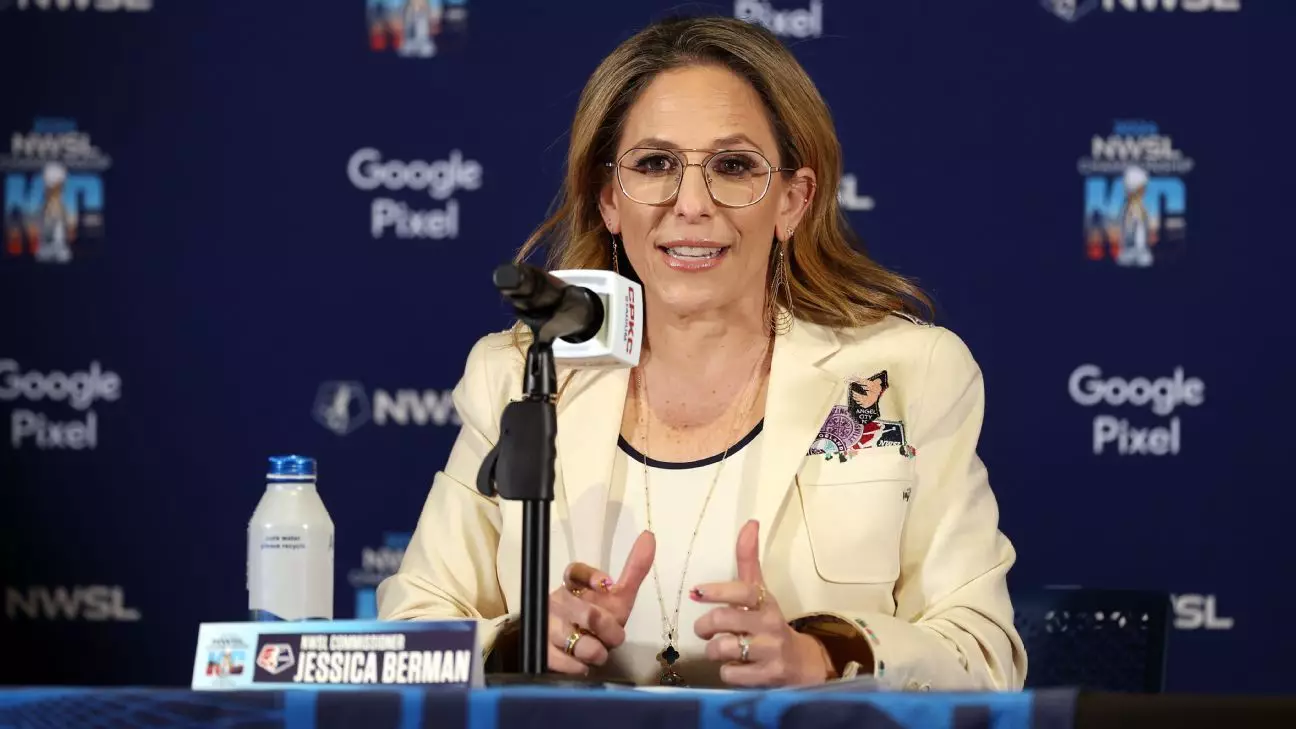The National Women’s Soccer League (NWSL) is on the brink of a significant transformation in its scope and reach, as recently confirmed by Commissioner Jessica Berman. Despite the league currently housing 14 teams, the impending announcement regarding the addition of a 16th franchise, likely in Denver, highlights a robust trajectory of growth for women’s soccer in the United States. Berman emphasized that the expansion efforts are ongoing and that the organization is in talks to identify the next markets and teams that will join the league in the future. With the announcement expected imminently, the anticipation surrounding Denver’s inclusion serves as a catalyst for further discussions about the NWSL’s long-term goals.
Berman’s assertion that there is “so much interest” from potential bidders who missed out in this expansion round reflects the league’s growing appeal. It indicates not only the viability of women’s professional soccer but also an invigorating competitive environment among cities eager to establish a franchise. This burgeoning interest is emblematic of the league’s increasing popularity and the recognition of women in sports as an empowering vehicle for growth.
Strategic Considerations for Future Growth
As the NWSL continues to expand, Berman has laid out three crucial guidelines for future market selection that deserve closer scrutiny. First and foremost is the criterion of ownership. The emphasis on finding an appropriate buyer illustrates the league’s focus on sustainability and the importance of fostering partnerships that can enhance the franchise’s value. Financial backing coupled with a clear vision for growth is essential, ensuring that any new team fits within the broader NWSL framework.
Infrastructure is the second pivotal factor that Berman mentions. This speaks volumes about the commitment to professionalism and quality in women’s soccer, as the league desires venues that not only meet current standards but are equipped to evolve with the sport’s growth. Bearing in mind that the facilities must serve the league’s ambitions in the coming years, this strategic direction is set to encourage cities to invest heavily in their local soccer culture.
Lastly, the market potential itself is a consideration, albeit placed third in priority. The NWSL’s approach recognizes the vast opportunities in various regions of the country and signals an understanding that market dynamics can shift. Consequently, the league opens itself up to a broad array of future sites, providing flexibility in tapping into new demographics that can champion women’s soccer.
Adapting to a New Era
As the NWSL prepares to embark on a new season in 2025, the elimination of the college draft and the introduction of free agency present both challenges and opportunities. Berman acknowledges the complexity of this transition, indicating that there is no precedent to guide the league as it navigates these changes. This unique situation calls for adaptability from both technical staff and players, signaling a shift in how player recruitment and team formation will occur in the future.
The NWSL has always been a proposition involving constant learning, and as Berman mentioned, this is a collective adjustment for all involved. The transition from a draft system to an open agency might bolster competition within the league but could also leave some players, particularly those without offers, in a precarious position. Ensuring that every player finds a role is a daunting task that will require innovation and collaboration from all parties, driving the ecosystem towards greater stability and satisfaction.
The NWSL stands at a crossroads, prepared to define its future with bold expansion plans and strategic realignments within its operational framework. As they get set to welcome a new franchise while navigating the complexities of player recruitment, the league’s commitment to growth is evident. Jessica Berman’s insights underline a forward-thinking ethos that prioritizes sustainability, quality, and inclusive growth. With the increasing visibility and interest in women’s sports, the NWSL is not merely expanding its geographical footprint but also crafting a narrative of empowerment, inclusivity, and excellence that resonates far beyond the soccer field. As they affirm their place in the sporting landscape, the league will undoubtedly face challenges, but embracing the journey ahead suggests a promising future for all involved.


Leave a Reply